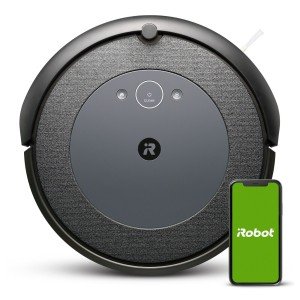Understanding Floor Robots: The Future of Home Cleaning
In the last few years, technological advancements have substantially changed the landscape of home cleaning. Amongst the most noteworthy innovations is the floor robot, a device that has actually quickly gained popularity for its benefit and efficiency. This short article intends to explore the different aspects of floor robots, their functionality, advantages, popular models, and some frequently asked questions to assist customers make notified decisions.
What is a Floor Robot?
A floor robot, frequently described as a robotic vacuum, is an automated device created to browse floorings and get rid of dirt, dust, and debris. Unlike conventional vacuum, floor robots operate autonomously, providing a hassle-free cleaning experience. These smart devices use sensors, mapping technologies, and advanced algorithms to clean different surface areas, consisting of hardwood, tile, and carpet.
How Do Floor Robots Work?
Floor robots operate through a mix of software and hardware elements. Here are the key functions that enable their functionality:
1. Sensors
- Challenge Detection: Floor robots have integrated sensing units that assist them detect challenges, permitting them to navigate around furniture and avoid falls.
- Cliff Sensors: These prevent the robot from dropping stairs or ledges by recognizing changes in elevation.
2. Navigation and Mapping
- Visual Mapping: Some innovative models utilize video cameras and laser innovation to develop comprehensive maps of the cleaning location.
- Simultaneous Localization and Mapping (SLAM): This technique assists the robot track its area and successfully prepare its cleaning path.
3. Cleaning Mechanisms
- Suction Power: Most robotic vacuums utilize a suction system to catch dirt and dust, which is then kept in an onboard dustbin.
- Brushing Systems: Many designs come geared up with rotating brushes or mops for boosted cleaning capabilities, especially on carpets or difficult surfaces.
4. Smart Features
- Connection: Many floor robots support Wi-Fi connection, enabling users to control them through smartphone apps or smart home systems.
- Scheduling: Users can set up cleaning times, guaranteeing their homes are tidy even when they're not there.
5. Autonomous Charging
- Self-Docking: Most robots automatically go back to their charging station once their battery runs low, guaranteeing they're constantly all set to clean.
Benefits of Using a Floor Robot
The adoption of floor robots features many advantages that make them appealing to users:
1. Convenience
Floor robots can clean while users take care of other tasks, enabling multitasking and time-saving.
2. Increased Efficiency
Robotic vacuums typically cover more ground in less time compared to standard approaches, thanks to their methodical cleaning patterns.
3. Constant Cleaning Routine
Users can schedule regular cleansings, guaranteeing that their homes remain tidy without needing day-to-day intervention.
4. Ease of access
Robotic vacuums can easily access hard-to-reach areas, such as under furniture or in tight spaces.
5. Advanced Features
Many designs come equipped with functions like voice control and app integration, enhancing use and accessibility.
Popular Floor Robots
When considering a floor robot, different brand names and models deal with different requirements and budgets. Here's a quick overview of some leading options:
| Brand | Model | Secret Features | Price Range |
|---|---|---|---|
| iRobot | Roomba i7+ | Smart mapping, self-emptying dock | ₤ 600 - ₤ 800 |
| Roborock | Roborock S7 | Sonic mopping, obstacle avoidance | ₤ 500 - ₤ 700 |
| Neato | Neato D7 | D-shape style, advanced suction | ₤ 600 - ₤ 800 |
| Ecovacs | Ecovacs Deebot T8 | Mopping function, advanced mapping | ₤ 600 - ₤ 800 |
| Shark | Shark IQ Robot | Self-emptying base, home mapping | ₤ 400 - ₤ 600 |
(Note: Prices might vary based on sellers and ongoing promos.)
Regularly Asked Questions (FAQs)
1. Are floor robots effective on carpets?
Yes, a lot of modern-day floor robots are developed to tidy different surface areas, including carpets. Models with strong suction and rotating brushes are especially reliable at getting pet hair and ground-in dirt.
2. How typically should I run my floor robot?
This depends on your household's needs. For automatic floor cleaner with family pets or high foot traffic, day-to-day or every other day cleaning might be beneficial. For quieter households, running the robot when a week might be enough.
3. Can I control my floor robot remotely?
Numerous floor robots come with mobile phone apps that permit users to manage their gadgets from another location, schedule cleansings, and screen efficiency.
4. Do I need to empty the dustbin often?
A lot of robots require regular emptying of the dustbin, specifically in homes with pets or heavy soil. Nevertheless, some models provide self-emptying capabilities, which reduce user participation.
5. Are floor robots suitable for all types of floor covering?
The majority of floor robots work on various surfaces, including hardwood, tile, and low-pile carpets. However, some may perform better on specific surface areas, so it's important to select a design matched to your home's needs.
As households continue to embrace technology, floor robots have emerged as vital cleaning companions, supplying convenience, efficiency, and advanced features. Understanding their performances, advantages, and readily available designs permits consumers to select the best floor robot to meet their particular cleaning needs. By investing in automatic floor cleaner , homeowners can ensure their home remain clean and comfortable with very little effort.

